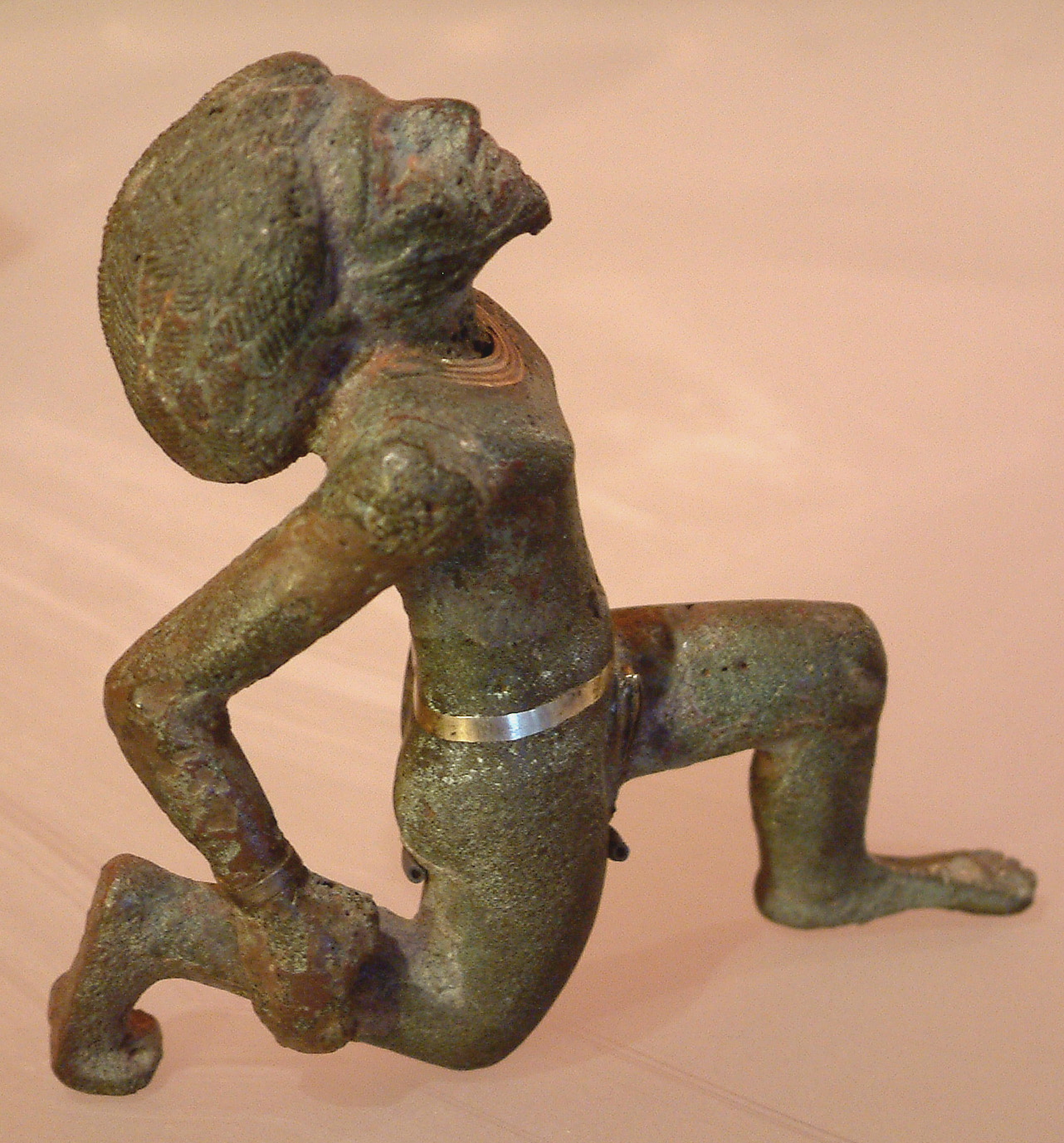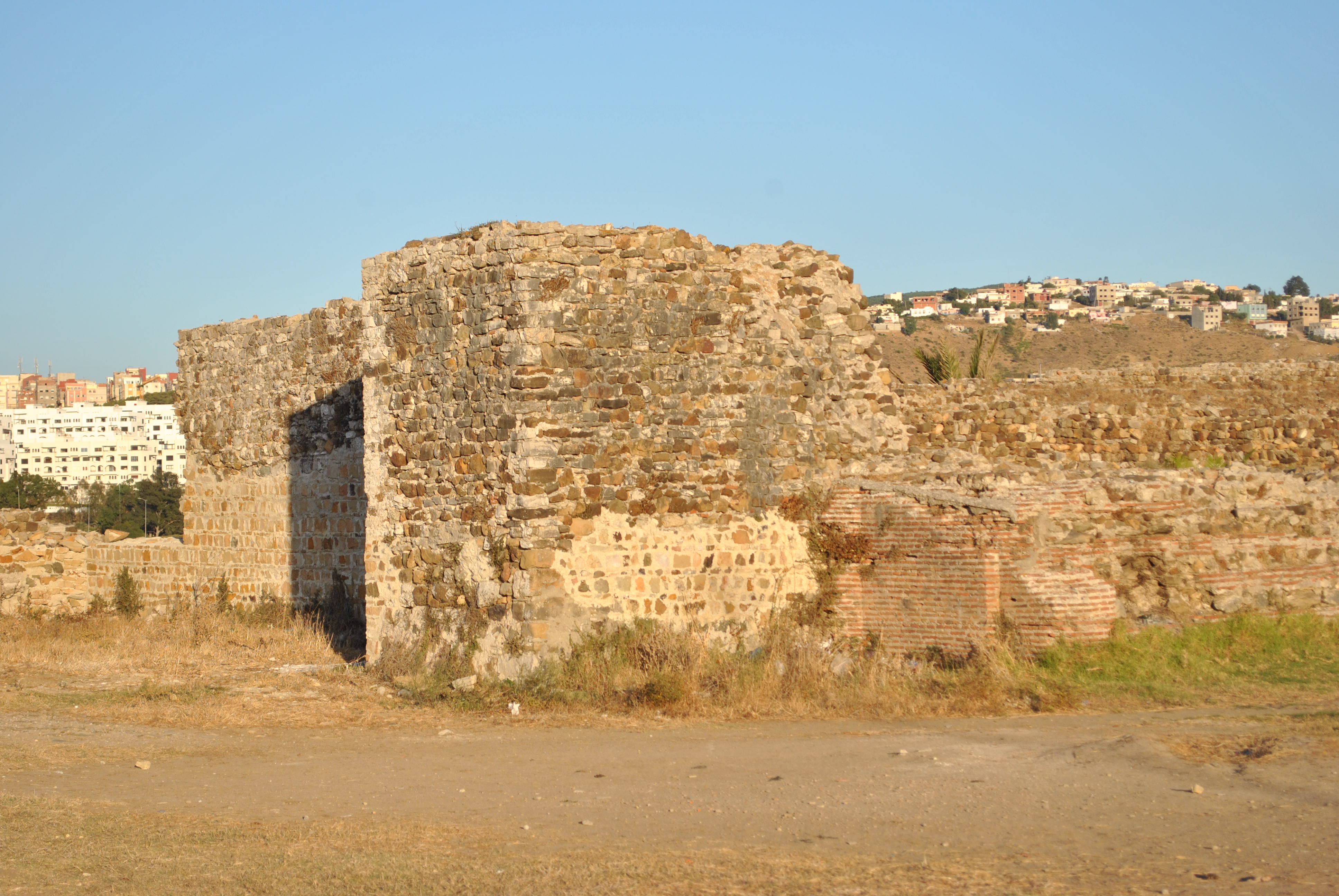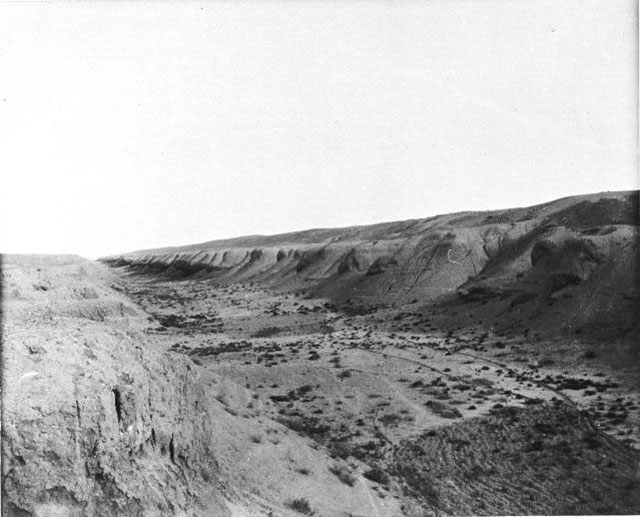|
Berber Revolt
The Berber Revolt or the Kharijite Revolt of 740–743 AD (122–125 AH in the Islamic calendar) took place during the reign of the Umayyad Caliph Hisham ibn Abd al-Malik and marked the first successful secession from the Arab caliphate (ruled from Damascus). Fired up by Kharijite puritan preachers, the Berber revolt against their Umayyad Arab rulers began in Tangier in 740, and was led initially by Maysara al-Matghari. The revolt soon spread through the rest of the Maghreb and across the straits to al-Andalus. Although the Berbers managed to end Umayyad rule in the western Maghreb following the battles of Badgoura and of the Nobles, the Umayyads scrambled and managed to prevent the core of Ifriqiya (Tunisia, eastern Algeria and western Libya) and al-Andalus (Spain and Portugal) from falling into rebel hands, notably securing victory in the decisive battle of al-Asnam. However, the rest of the Maghreb was never brought back under Umayyad rule. After failing to capture the ... [...More Info...] [...Related Items...] OR: [Wikipedia] [Google] [Baidu] |
Berbers
Berbers, or the Berber peoples, also known as Amazigh or Imazighen, are a diverse grouping of distinct ethnic groups indigenous to North Africa who predate the arrival of Arab migrations to the Maghreb, Arabs in the Maghreb. Their main connections are identified by their usage of Berber languages, most of them mutually unintelligible, which are part of the Afroasiatic languages, Afroasiatic language family. They are indigenous peoples, indigenous to the Maghreb region of North Africa, where they live in scattered communities across parts of Morocco, Algeria, Libya, and to a lesser extent Tunisia, Mauritania, northern Mali and northern Niger. Smaller Berber communities are also found in Burkina Faso and Egypt's Siwa Oasis. Descended from Stone Age tribes of North Africa, accounts of the Imazighen were first mentioned in Egyptian hieroglyphs, Ancient Egyptian writings. From about 2000 BC, Berber languages spread westward from the Nile, Nile Valley across the northern Sahara int ... [...More Info...] [...Related Items...] OR: [Wikipedia] [Google] [Baidu] |
Berber People
Berbers, or the Berber peoples, also known as Amazigh or Imazighen, are a diverse grouping of distinct ethnic groups indigenous to North Africa who predate the arrival of Arabs in the Maghreb. Their main connections are identified by their usage of Berber languages, most of them mutually unintelligible, which are part of the Afroasiatic language family. They are indigenous to the Maghreb region of North Africa, where they live in scattered communities across parts of Morocco, Algeria, Libya, and to a lesser extent Tunisia, Mauritania, northern Mali and northern Niger. Smaller Berber communities are also found in Burkina Faso and Egypt's Siwa Oasis. Descended from Stone Age tribes of North Africa, accounts of the Imazighen were first mentioned in Ancient Egyptian writings. From about 2000 BC, Berber languages spread westward from the Nile Valley across the northern Sahara into the Maghreb. A series of Berber peoples such as the Mauri, Masaesyli, Massyli, Musulamii, Ga ... [...More Info...] [...Related Items...] OR: [Wikipedia] [Google] [Baidu] |
Fitna (word)
''Fitna'' (or ', pl. '; : "temptation, trial; sedition, civil strife, conflict"#refWehr1976, Wehr (1976), p. 696.) is an Arabic term that denotes concepts such as temptation, trial, sedition, civil strife, and conflict. The term encompasses a broad range of connotations, including trial, affliction, and distress. While it holds significant historical importance, the word is also widely used in modern Arabic, often without reference to its historical connotations. A distinction can be observed between the meanings of ' as used in Classical Arabic and its meanings as used in Modern Standard Arabic and various Arabic dialect, colloquial dialects. Given the conceptual significance of ''fitna'' in the Qur’an, its Qur’anic usage warrants separate consideration from, though in addition to, its broader Lexical item, lexical meaning in Classical Arabic. In Islamic historiography, ''fitna'' specifically refers to civil wars within a Muslim polity, notably the five civil wars of the Is ... [...More Info...] [...Related Items...] OR: [Wikipedia] [Google] [Baidu] |
Khalid Ibn Hamid Al-Zanati
Khalid ibn Hamid al-Zanati () was a Zenata Berber chieftain and military commander during the Berber Revolt of the 740s against the Umayyads in the Maghreb. For reasons which are still obscure, Maysara al-Matghari, the original leader of the Berber Revolt and self-proclaimed caliph, was deposed and executed by fellow Berber rebels in the Summer or Fall of 740. Khalid ibn Hamid was elected to take his place. Khalid ibn Hamid led the Berber rebel armies in two stunning victories over the Umayyad authorities. In the Battle of the Nobles in late 740, Khalid annihilated an army composed of Arab forces sent from Ifriqiya. The shock of the defeat prompted the Umayyad Caliph Hisham to dispatch a mighty Syrian expeditionary force from the east to join the Ifriqiyans in crushing the Berber rebellion. In October 741, Khalid's Berber army defeated the combined Ifriqiyan-Syrian force at the Battle of Bagdoura (or Baqdura), by the Sebou River (near modern Fes), killing the new Ifriqyian go ... [...More Info...] [...Related Items...] OR: [Wikipedia] [Google] [Baidu] |
Kairouan
Kairouan (, ), also spelled El Qayrawān or Kairwan ( , ), is the capital of the Kairouan Governorate in Tunisia and a UNESCO World Heritage Site. The city was founded by the Umayyads around 670, in the period of Caliph Mu'awiya (reigned 661–680); this is when it became an important centre for Sunni Islamic scholarship and Quranic learning, attracting Muslims from various parts of the world. The Mosque of Uqba is situated in the city.Europa Publications "General Survey: Holy Places" ''The Middle East and North Africa 2003'', p. 147. Routledge, 2003. . "The city is regarded as a holy place for Muslims." Etymology The name ( ''al-Qayrawān'') is an Arabic word meaning "military group" or "caravan", borrowed early on from the Middle Persian word ''kārawān'' (modern Persian ''kârvân''), meaning "military column" (''kâr'' "people/military" + ''vân'' "outpost") or " caravan" (see caravanserai). In Berber, the city used to be called ''Tikirwan'', thought to be an adaptatio ... [...More Info...] [...Related Items...] OR: [Wikipedia] [Google] [Baidu] |
Umayyad Rule In North Africa
Umayyad rule in North Africa or Umayyad Ifriqiya was a province of the Umayyad Caliphate (661–750) during the historical period in which it ruled the Maghreb region of North Africa (excluding Egypt), from its conquest of the Maghreb starting in 661 to the Kharijite Berber Revolt ending in 743, which led to the end of its rule in the western and central Maghreb. Following this period, the Umayyads retained their rule over Ifriqiya (later fell to the Abbasid Caliphate) while the rest of the Maghreb fell to successive Islamic dynasties of Arab, Berber and Persian descent. History Conquest and expansion The Muslim conquest of the Maghreb began in 647 under the Rashidun Caliphate, which used Egypt as a base to conquer the Maghreb. Abdallah ibn Sa'd led the invasion with 20,000 soldiers from Medina in the Arabian Peninsula, swiftly taking over Tripolitania and then defeating a much larger Byzantine army at the Battle of Sufetula in the same year. However, the Arab troops wit ... [...More Info...] [...Related Items...] OR: [Wikipedia] [Google] [Baidu] |
Battle Of Al-Asnam
The Battle of al-Asnam (Arabic: معركة الأصنام) was a military engagement between the Umayyad governor of Ifriqya, Handhala ibn Safwan al-Kalbi, and the Sufrite Berber insurgents led by Abd al-Wahid ibn Yazid al-Hawwari. The Umayyads decisively defeated the Berber army, saving Kairouan and Ifriqiya from the Berbers rebels. Background In 742 AD, a large two-Berber army marched to attack Kairouan, one led by Oqasha ibn Ayub al-Fezari and the other by Abd al-Wahid ibn Yazid al-Hawwari. Urgent to meet Oqasha on the battlefield, Handhala dispatched an army of 40,000 cavalry led by a Lakhmite to meet Abd al-Wahid, and fought for a month before they were defeated and lost half of their army. Handhala defeated Oqasha at the battle of al-Qarn and executed him, but withdrew after suffering heavy casualties and prepared for Abd al-Wahid. In Kairouan, Handhala recruited the inhabitants and armed them, and raised around 5,000 infantry and 5,000 archers. Handhala also dug a tre ... [...More Info...] [...Related Items...] OR: [Wikipedia] [Google] [Baidu] |
Battle Of The Nobles
The Battle of the Nobles () was an important confrontation in the Berber Revolt in c. 740 AD. It resulted in a major Berber victory over the Arabs in banks of the Chelif River, near Chlef (Algeria). During the battle, numerous Arab aristocrats were slaughtered, which led to the conflict being called the "Battle of the Nobles". Zenata Berber chieftain Khalid ibn Hamid al-Zanati led the revolting Berber soldiers. Location There are two hypotheses on the location of the battle site. It would have taken place on the wadi Chelif ( present-day Algeria) according to a majority of historians.. Charles-André Julien, while reporting that the battle took place on Chelif, notes that this would imply that the Kharejite revolt would have reached central Zenetia, which would confirm the thesis of Émile-Félix Gautier. However, according to him, Arab historians other than Ibn Khaldun place the battle in northern Morocco. The discrepancy perhaps comes from the copy of Ibn Khaldun's text wh ... [...More Info...] [...Related Items...] OR: [Wikipedia] [Google] [Baidu] |
Battle Of Bagdoura
The Battle of Bagdoura or Battle of Baqdura was a decisive confrontation in the Berber Revolt in late 741 CE. It was a follow-up to the Battle of the Nobles the previous year, and resulted in a major Berber victory over the Arabs by the Sebou River (near modern Fes). The battle would permanently break the hold of the Umayyad Caliphate over the far western Maghreb (Modern day Morocco), and the resulting retreat of elite Syrian forces into Spain would have implications for the stability of al-Andalus. Background The Berber revolt broke out in early 740 in western Morocco, in response to the oppressive, unfair (and, by Islamic law, illegal) tax collection and slave-tribute policies imposed on Muslim Berbers by Ubayd Allah ibn al-Habhab, governor in Kairouan, Ifriqiya and over all the Maghreb and al-Andalus. The Berber rebellion was inspired by Kharijite activists of the Sufrite sect, who held out the promise of a puritan Islamic order, without ethnic or tribal discriminatio ... [...More Info...] [...Related Items...] OR: [Wikipedia] [Google] [Baidu] |
Tangier
Tangier ( ; , , ) is a city in northwestern Morocco, on the coasts of the Mediterranean Sea and the Atlantic Ocean. The city is the capital city, capital of the Tanger-Tetouan-Al Hoceima region, as well as the Tangier-Assilah Prefecture of Morocco. Many civilisations and cultures have influenced the history of Tangier, starting from before the 10th centuryBCE. Starting as a strategic Phoenician town and trading centre, Tangier has been a nexus for many cultures. In 1923, it became an Tangier International Zone, international zone managed by colonialism in Africa, colonial powers and became a destination for many European and American diplomats, spies, Bohemianism, bohemians, writers and businessmen. That status came to an end with Moroccan independence, in phases between 1956 and 1960. By the early 21st century, Tangier was undergoing rapid development and modernisation. Projects include tourism projects along the bay, a modern business district called Tangier City Centre, an ai ... [...More Info...] [...Related Items...] OR: [Wikipedia] [Google] [Baidu] |
Kharijite
The Kharijites (, singular ) were an Islamic sect which emerged during the First Fitna (656–661). The first Kharijites were supporters of Ali who rebelled against his acceptance of arbitration talks to settle the conflict with his challenger, Mu'awiya, at the Battle of Siffin in 657. They asserted that "judgment belongs to God alone", which became their motto, and that rebels such as Mu'awiya had to be fought and overcome according to Qur'anic injunctions. Ali defeated the Kharijites at the Battle of Nahrawan in 658, but their insurrection continued. Ali was assassinated in 661 by a Kharijite dissident seeking revenge for the defeat at Nahrawan. After Mu'awiya established the Umayyad Caliphate in 661, his governors kept the Kharijites in check. The power vacuum caused by the Second Fitna (680–692) allowed for the resumption of the Kharijites' anti-government rebellion, and the Kharijite factions of the Azariqa and Najdat came to control large areas in Persia and Arabi ... [...More Info...] [...Related Items...] OR: [Wikipedia] [Google] [Baidu] |
Islamic Calendar
The Hijri calendar (), also known in English as the Islamic calendar, is a lunar calendar consisting of 12 lunar months in a year of 354 or 355 days. It is used to determine the proper days of Islamic holidays and rituals, such as the Ramadan, annual fasting and the annual season for the Hajj, great pilgrimage. In almost all countries where the predominant religion is Islam, the civil calendar is the Gregorian calendar, with Assyrian calendar, Syriac month-names used in the Arabic names of calendar months#Levant and Mesopotamia, Levant and Mesopotamia (Iraq, Syria, Jordan, Lebanon and Palestine), but the religious calendar is the Hijri one. This calendar enumerates the Hijri era, whose Epoch (reference date), epoch was established as the Islamic New Year in 622 Common Era, CE. During that year, Muhammad and his followers migrated from Mecca to Medina and established the first Muslim community (''ummah''), an event commemorated as the Hijrah. In the West, dates in this era ar ... [...More Info...] [...Related Items...] OR: [Wikipedia] [Google] [Baidu] |






